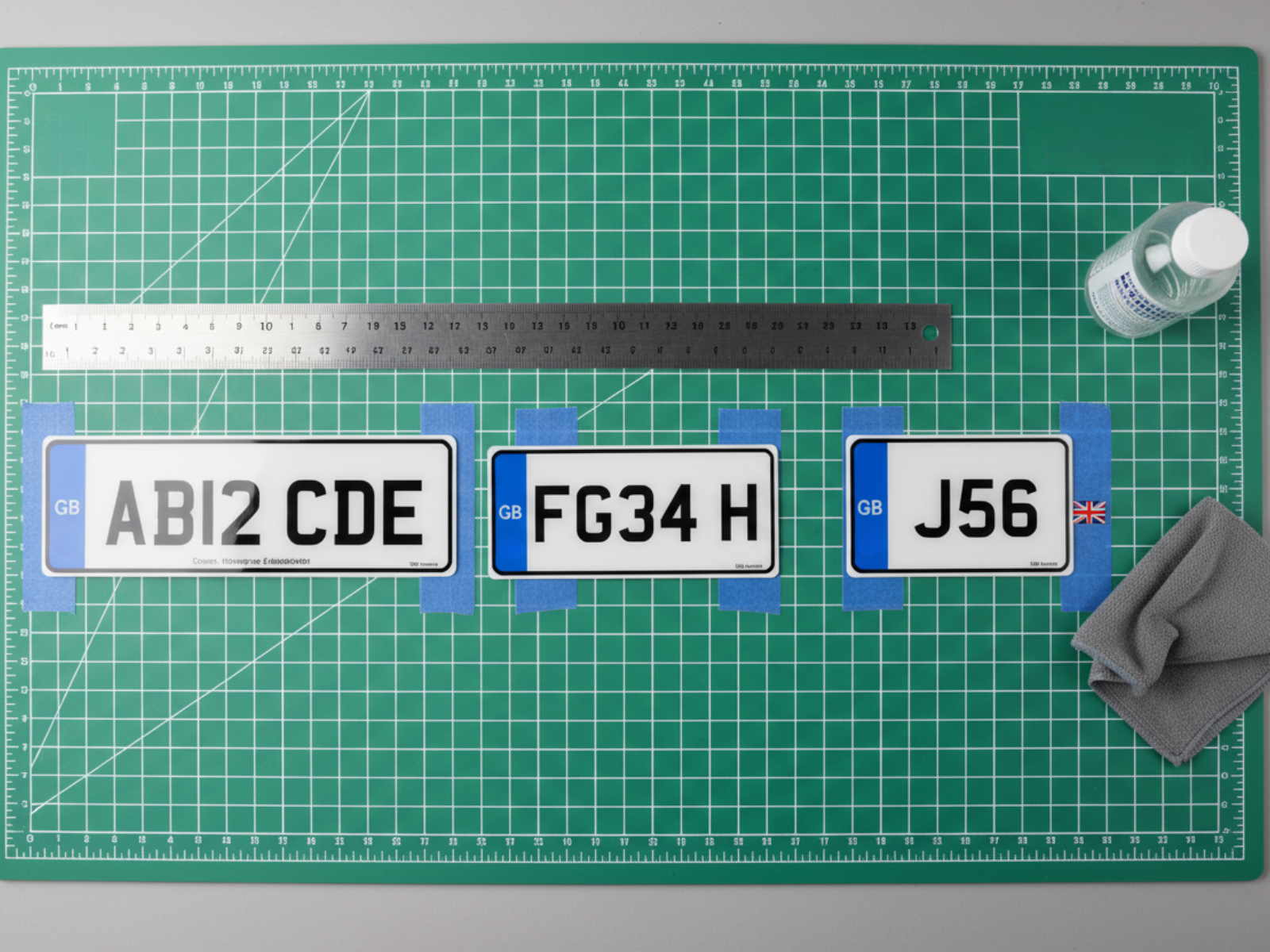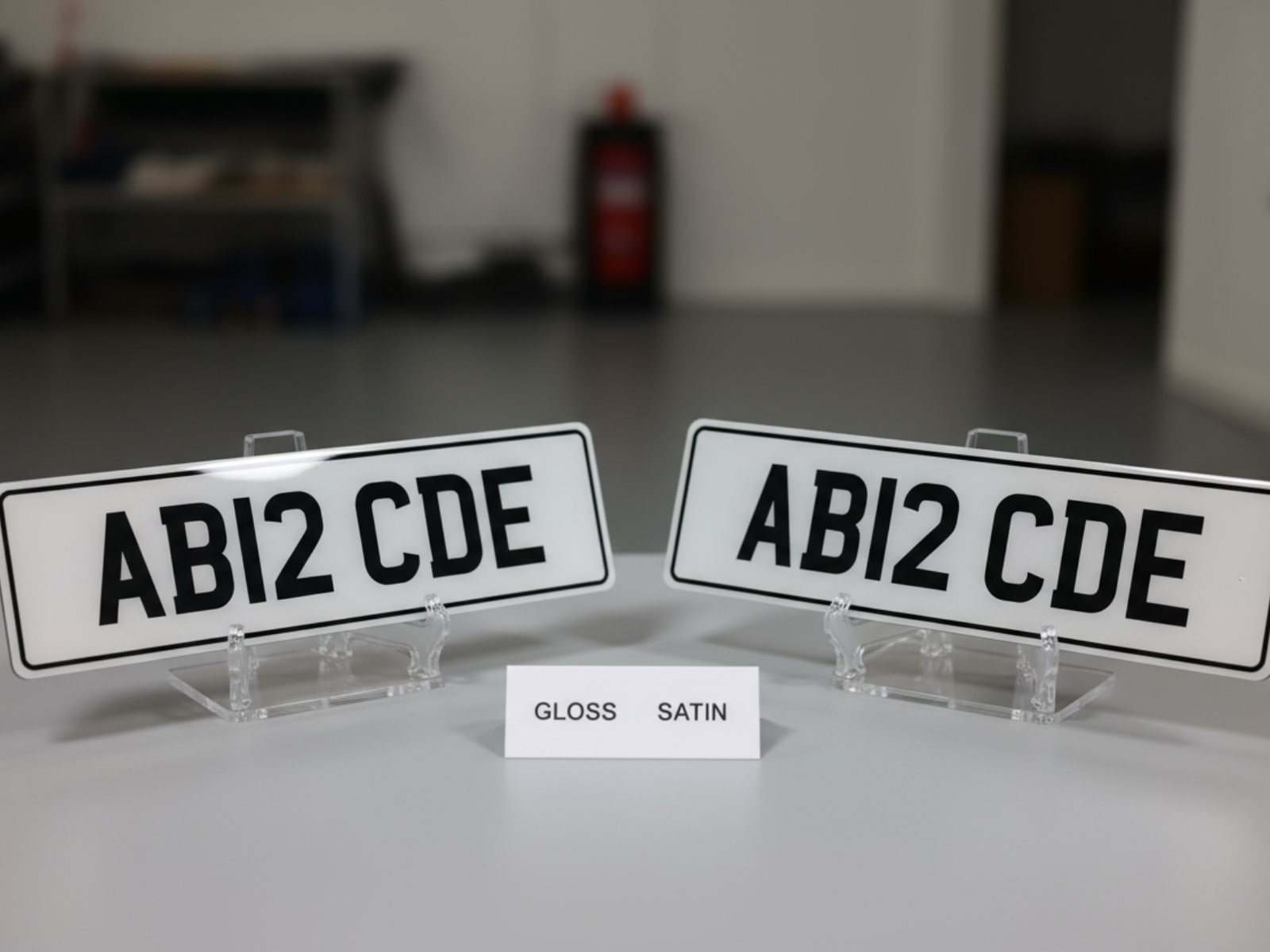First impressions often rest on details, and car styling is no different. Number plate designs might look like a small part of the bigger picture, yet they can completely alter how polished or premium a vehicle appears. A few subtle design tweaks to a car plate, the kind that don’t scream for attention but quietly sharpen the overall look, are sometimes all it takes to make a motor stand out.
Of course, any changes need to stay on the right side of the law. The UK has clear rules on plate size, font, spacing and reflective material, so it’s worth keeping those legal number plate specs UK drivers must follow firmly in mind.
In this article, you’ll see how five small adjustments, from font shifts to borders, finishes, sizing and premium fixings, can create custom number plates that feel more personal, stylish and professional.
1. Make Subtle Font Adjustments
Fonts might not sound like the most exciting part of number plate designs, yet the typeface you choose has a big say in how sharp or soft the final look feels. In the UK, there’s a standard legal style that all road-legal plates must follow; characters need to be clear, properly spaced and easily read at a distance. That said, within those legal number plate specs, UK drivers can still pick small variations that give the plate more presence.
For example, a slightly bolder weight can make characters stand out more, while a narrower stroke tends to look cleaner on sleeker cars. Some sans serif styles appear a bit more modern than others, and these subtle design tweaks car plate owners often freshen up a plate's appearance without straying from legality.
The trick is balance: choose a style that feels crisp and legible, then pair it with consistent spacing so your registration looks sharp, confident and well-proportioned.
2. Add a Thin, Crisp Border
Sometimes the simplest change makes the biggest impact, and borders are a good example. A thin line around the edge of your plate adds definition, so the registration looks framed rather than floating.
Number plate border styles vary more than people expect. A classic black outline suits almost any vehicle, while chrome can feel more upmarket, and colour-matched borders tie the plate neatly to your car’s paintwork.
The key here is subtlety. A border that’s too thick or overly bright can distract from the characters, but a thin, crisp edge gives structure without stealing attention. It’s one of those subtle design tweaks car plate owners often underestimate, yet once fitted, the difference is very clear.
From a legal point of view, margins must be kept clear so the border doesn’t obscure the numbers or letters. As long as that rule is followed, you’ll find that a well-chosen border creates a sharper, more complete look.
3. Opt for a Slightly Different Plate Size
Standard plates do the job, but size variations often change the way a car looks more than people realise. Choosing from number plate size options like slimline rectangles or shorter custom formats can subtly alter the balance of your vehicle’s front or rear end. These differences might sound small, yet they often make a plate sit more naturally with the lines of the bodywork.
Sports cars, for instance, sometimes look sharper with a shorter plate that mirrors the compact proportions of the bumper. Meanwhile, larger vehicles may benefit from a slightly taller or wider plate that fills the mounting space evenly.
Still, you can’t ignore the legal number plate specs that UK law sets out. Each plate must maintain minimum spacing, character size and reflective standards, so adjustments always need to stay within those limits. A smart approach is to measure your mounting area, compare it to the available formats, and then choose the plate size that looks proportionate without breaking the rules.

4. Choose a New Finish or Gloss Level
The finish of a plate is one of those details people don’t always think about, yet it has a huge influence on the way number plate designs catch the eye. A high-gloss surface reflects light and looks fresh, while a satin or matte number plate finish feels more understated and modern. Reflective coatings remain standard for legal plates, but within that requirement, there’s still room to choose how shiny or muted the final look appears.
For darker cars, a gloss finish often provides contrast that makes the registration pop. Lighter vehicles sometimes suit a softer satin look, which avoids too much glare and blends more naturally with pale paintwork. Matte plates, meanwhile, can deliver a more aggressive feel when paired with sports styling.
There are practical aspects too. Glossy finishes show dirt and scratches a little more clearly, while satin or matte tend to hide minor marks. The key is picking a finish that balances appearance with the way you use your car daily, so your plate always looks considered and well-kept.

5. Upgrade to Premium Fixings
Fixings are the small parts that hold your plate in place, such as screws, bolts, caps or even discreet frames, and they often get overlooked. Yet upgrading to premium fixings on number plates can completely change how finished the overall design feels.
Basic screws with plain caps sometimes stick out visually, especially if the colours don’t match your plate. Premium alternatives, such as stainless steel bolts, colour-matched caps or concealed clip systems, look cleaner and often last longer. Frames can add another level of polish by neatly enclosing the edges and protecting them from chips.
It’s a little detail, but these subtle design tweaks car plate owners make can transform a plate from looking fitted as an afterthought to appearing integrated with the car. On a practical level, premium fixings give extra security, helping prevent movement or tampering. Just make sure that nothing interferes with the surface of the registration or covers characters, as legality always comes first.
Small changes often add up to a big difference, and number plate designs prove that perfectly. Adjusting the font, adding a neat border, trying new number plate size options, choosing a different number plate finish, and fitting premium fixings number plates can each refine the look in their own way.
Before you order, keep this quick checklist in mind:
- Check legal number plate specs UK rules set for font, spacing and reflectivity.
- Measure your mounting space carefully.
- Decide which border style works best with your car.
- Choose a finish that complements your paintwork.
- Pick fixings that look good and hold securely.
Ready to see what works for your vehicle? Try the number plate builder or contact us for expert advice.
